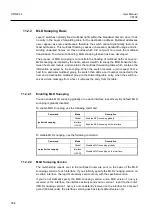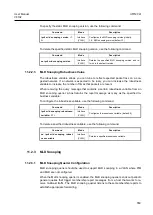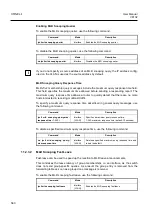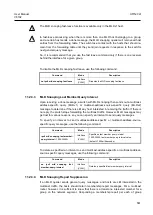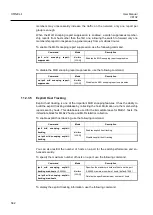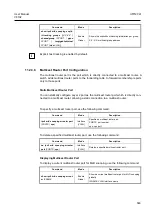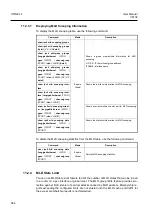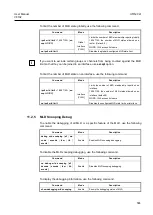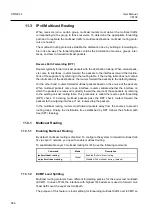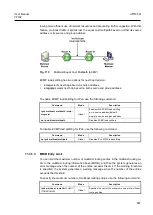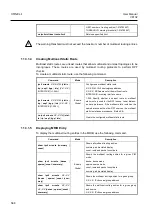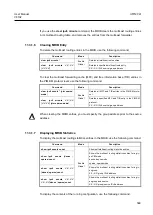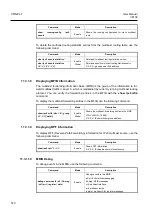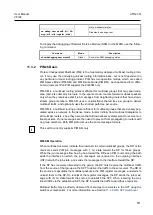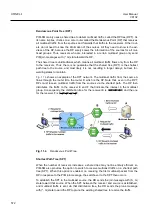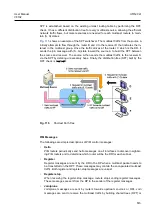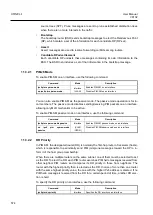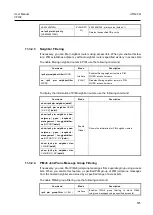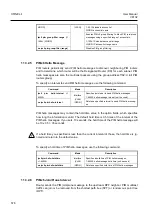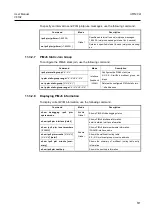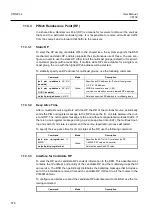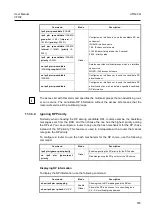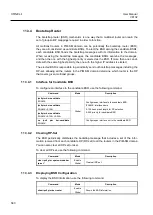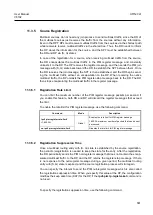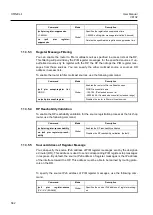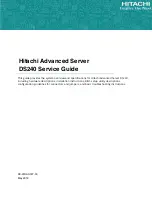
UMN:CLI
User Manual
V8102
572
Rendezvous Point Tree (RPT)
PIM-SM mainly uses a shared tree to deliver multicast traffic, called the RP tree (RPT). As
its name implies, it relies on a core router called the Rendezvous Point (RP) that receives
all multicast traffic from the sources and forwards that traffic to the receivers. Other rout-
ers do not need to know the information of the sources. All they need to know is the ad-
dress of the RP, because the RP surely knows the information of the sources for all mul-
ticast groups. Thus, receivers who are interested in a certain multicast group only send
PIM join messages with (*, G) state toward the RP.
The shared tree is unidirectional, which means all multicast traffic flows only from the RP
to the receivers. Thus, there is no guarantee that the shared tree (RPT) is the shortest
path tree to the source, and most likely it is not, resulting in longer delays, but less for-
warding states to maintain.
shows an example of the RPT network. The multicast traffic from the source A
flows through the router B to the router D which is the RP. Note that, even in the RPT,
RPs must receive multicast traffic from the sources via the shortest path. The RP then
distributes the traffic to the receiver E and F that indicate the interest in the multicast
group. Consequently, the distribution tree for the receiver E is
A
→
B
→
D
→
E
, and the one
for the receiver F is
A
→
B
→
D
→
C
→
F
.
Fig. 11.4
Rendezvous Point Tree
Shortest Path Tree (SPT)
When the number of receivers increases, a shared tree may not be entirely efficient, so
PIM-SM also provides the option to switch to receive multicast traffic on a shortest path
tree (SPT). When this option is enabled, on receiving the first multicast packet from the
RP in response to the PIM join message, the switchover to the SPT then occurs.
To establish the SPT to the multicast source, the DR sends the join message with (S, G)
state toward that source. When the SPT between the receiver and source is established,
and multicast traffic is sent via that distribution tree, the DR sends the prune message
with (*, G) state toward the RP to prune the existing shared tree to receive the traffic.

